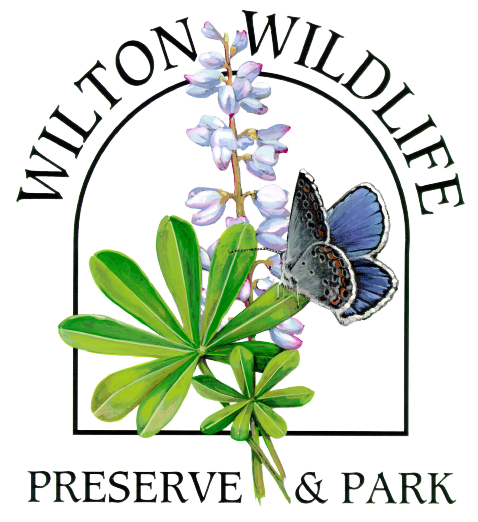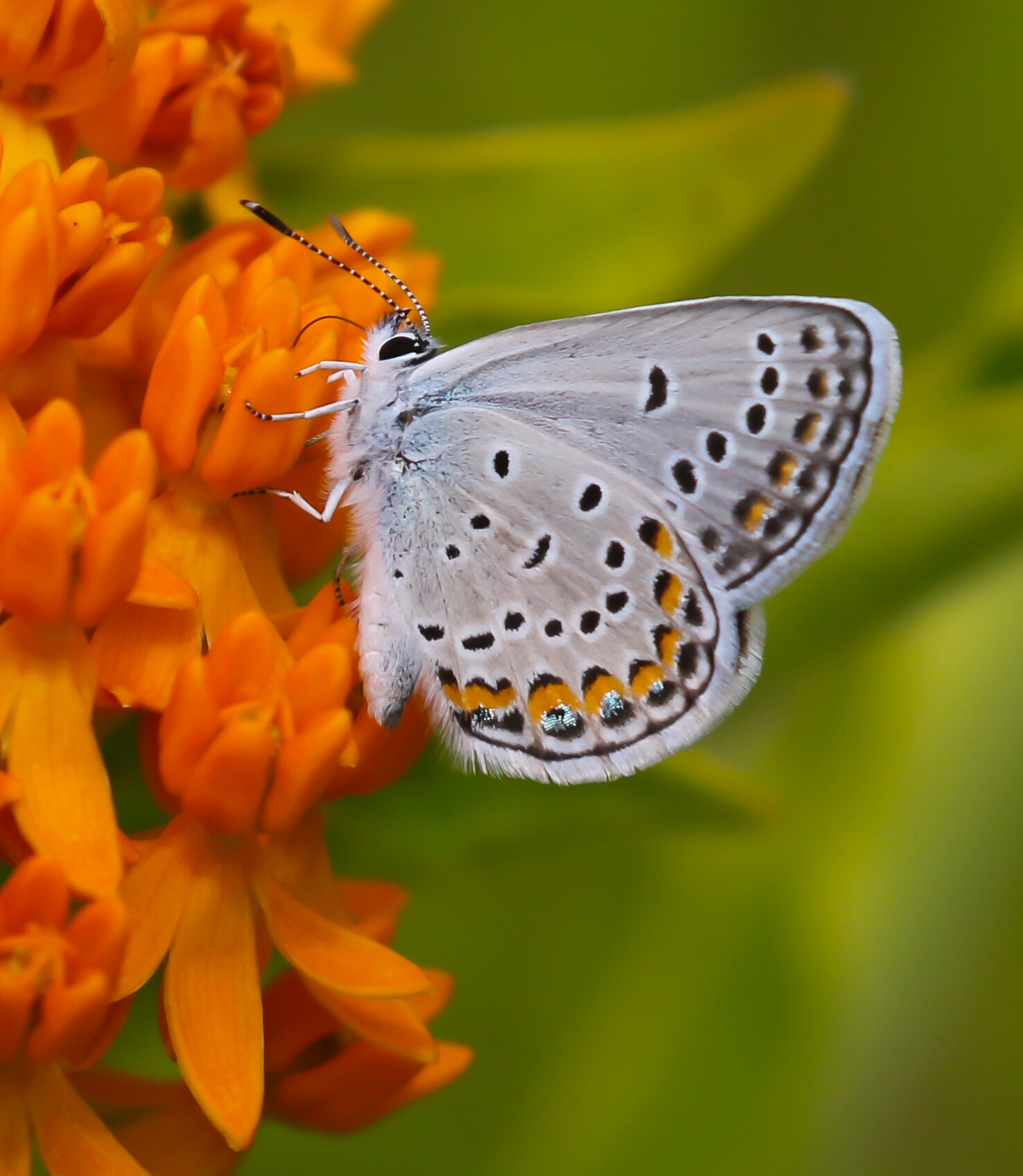Karner Blue Butterfly: Endangered
Wilton Wildlife Preserve & Park is one of the few remaining places in New York State where the Karner blue butterfly still exists.
The Karner blue butterfly, Lycaeides melissa samuelis, is endangered both statewide and federally. At the time it was federally listed, the population had declined rangewide by 99%. Intensive habitat restoration and management since then has put the species on the long path toward recovery.
Here we support the work of our partners, the New York State Department of Environmental Conservation, The Nature Conservancy, the Town of Wilton, and Saratoga County in their efforts to protect and manage the ecosystems that support habitats for the Karner blue butterfly.
Click here to watch the butterflies in action at Camp Saratoga
Description
The Karner blue butterfly is much smaller than most expect, with a wingspan of only one inch. the forewing of the male is blue and the hindwings of both sexes is grey with the spots and crescents. The upper hindwing of the female has the orange crescents along the edge.
Female Karner by Ron Harrower
History and Status
The Karner blue butterfly was first collected in 1861 in Karner, New York, a hamlet just outside of Albany. Historically, their range stretched from Maine to Minnesota and north into Ontario, Canada. They are currently found in scattered localities from New Hampshire to Minnesota, but most recently have no longer been found in Minnesota and Indiana, and many other states for even more years. The Karner blue butterfly has been on New York State’s endangered species list since 1977 and was placed on the federal endangered species list in 1992.
Life Cycle
Each year there are two generations (broods) of Karner blue butterflies. The first brood of adults appear in late May/early June. The females of the first brood lay eggs that hatch within 7-8 days. The adult butterflies of the second brood emerge from the chrysalis around the beginning of July. Females of the second brood lay their eggs on lupine seed pods, plant litter, or stems. These eggs overwinter and hatch the following spring to become the first brood of the next year.
Habitat
The Karner blue is dependent on wild blue lupine to survive. In their caterpillar stage they feed exclusively on the lupine, which makes it crucial for their survival.
The wild blue lupine is a perennial plant that grows in dry, sandy soils, preferring open or partially shaded areas. These meadows were historically created and maintained by natural forces, such as wildfires, but in areas of fire suppression they are now managed. This is done through mowing on a regular basis to prevent trees from growing in the open meadows and shading out the lupine.
Why are they endangered?
The most important factor in understanding the reasons for the Karner blue butterfly’s decline is loss of habitat. If the meadows are not managed, trees will shade out wild blue lupine and replace the habitat for Karner blue butterflies. Besides this, Karner blue habitat is being lost and fragmented due to commercial and residential development as well as clearing land for agriculture.In addition, ATVs and yard waste dumping can often disrupt and hurt the dormant eggs.
The Karner blue butterfly is also threatened by climate change. As our climate becomes warmer and more unstable, there is less likelihood the ground will maintain several inches of insulating snow pack throughout the winter, keeping the eggs dormant and safe from temperature fluctuations. If they hatch early they could be out of sync with the emergence of lupine and starve. In addition, weather changes such as drought and severe storms can also cause trouble for the brood.
What is being done?
Managing ecosystems to ensure their health and promoting the growth of the blue lupine helps establish stable habitats where the Karner blue butterfly can thrive. Because of their endangered status, there are efforts to establish new habitats and protect existing ones from development. In New York State there is also a cooperative group consisting of NYS DEC, Office of Parks, Recreation and Historic Preservation, The Nature Conservancy and the Albany Pine Bush Commission that is developing a recovery strategy for the Karner blue butterfly.
What can you do?
The best way to protect the Karner blue butterfly is to support organizations and efforts that work with their conservation. At Wilton Wildlife Preserve & Park, we work with our landowning partners, in their work to manage and restore these ecosystems and we welcome volunteers to help in our efforts!
Opportunities to get Involved
We welcome spring, summer, and fall volunteers that can help with seed picking of the blue lupine and other important plant species, planting of the blue lupine seeds, and habitat management in the meadows. Email: info@wiltonpreserve.org
To access more information:
Download our Karner blue butterfly brochure here.
Para español, haga clic aquí.




